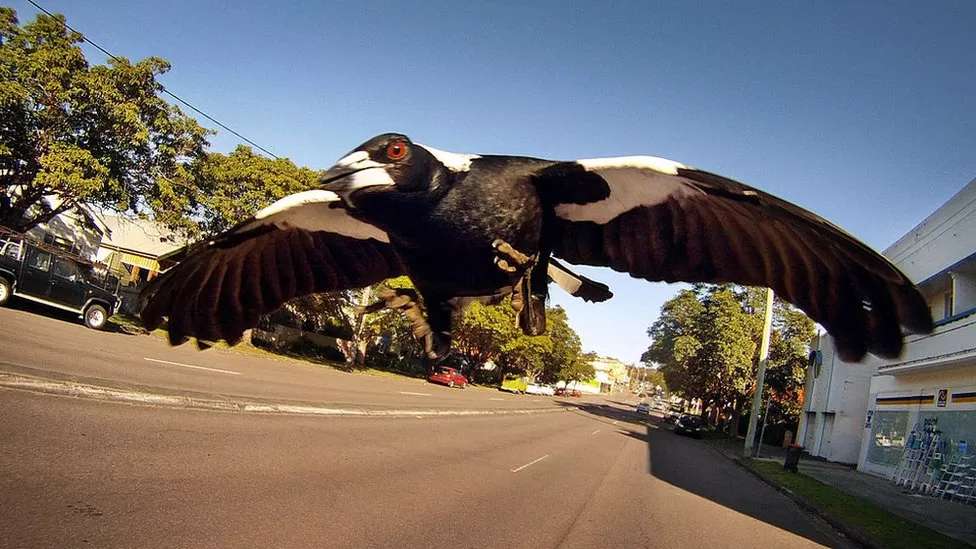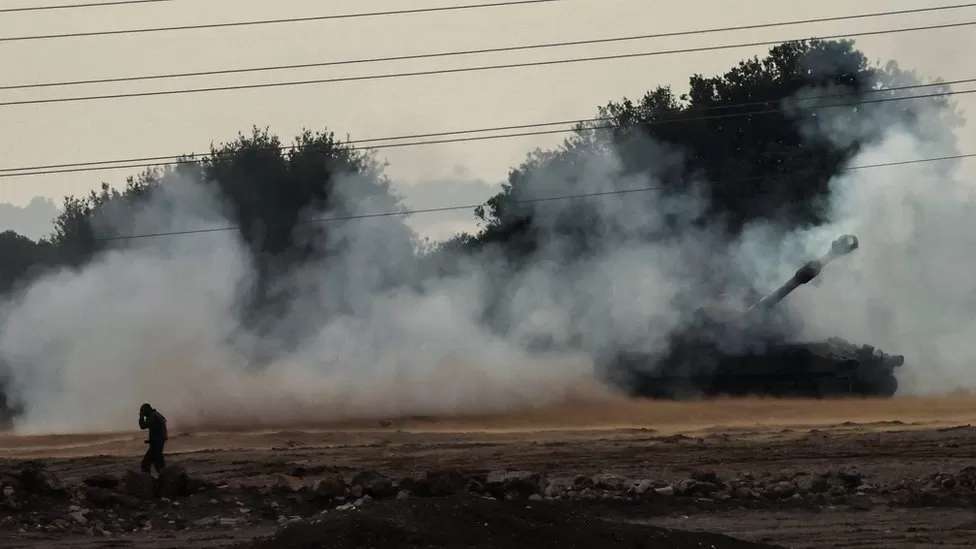But there are also plenty of people who struggle to get past their divebombing antics.
The whir of flapping wings; the glint of a sharp beak in the sun; a flash of their reddish-brown eyes - all enough to strike fear in the hearts of many.
"I am genuinely terrified," Tione Zylstra tells the BBC.
The 21-year-old's local train station is vigilantly guarded by a magpie, and during breeding season it plays target practice with her head weekly.
"They're silent killers… I'll just see this shadow over my head getting bigger and bigger and bigger.
"I have asthma and I would be sprinting, having an asthma attack on the train, just to get away from this magpie.
"I don't know why it hated me, but it did… I never did anything wrong, I swear!"
Why do magpies swoop?
Australians are well accustomed to swooping birds - there are plovers, noisy miners and even the kookaburra.
But magpies are considered the ultimate "swoopy boy" and few people are without a story.
Only a very small portion of male magpies engage in the practice though, and when they do, it's to protect their nests during breeding season, from August to November.
Experts say they do not swoop unprovoked.
But they also say magpies can interpret simple gestures like running through their territory as a slight, and not only can they recognise individual faces - they tend to hold a grudge.
"Let's say you've shown some kind of response by waving your arms or trying to hit the bird away from you," says animal behaviourist and Emeritus Professor Gisela Kaplan, who literally wrote the book on magpies.
"That act is a declaration of open war. A magpie interprets that as a sign of aggression and will then always swoop that person from then on, every year.
"[And] somebody of a similar build, a similar height and hair colour may get mistaken in their fury, or anxiety."
Don't run. Travel in groups. Carry an umbrella and wear sunglasses on the back of your head.
These are some of the ominous warnings issued in Australia each spring, as magpies and humans begin their annual turf war.
Streets and parks become a battleground, as the birds - descending from above and attacking from behind - swoop down on anything they fear poses a threat to their offspring.
High up in their nests, they rule over their kingdom with an iron claw, while on the ground, humans dust off their protective hats - traditionally a plastic ice-cream container - and duck for cover.
At times drawing blood, their ambushes can cause serious injuries, and in a handful of cases, death.
But experts claim magpies are misunderstood and humans are the aggressors.
And they want you to know peace is possible.
Brainy birds
Magpies are arguably the country's most polarising bird.
Named after their resemblance to the Eurasian magpie, to which they are not actually closely related, Australian magpies are a protected native species, and to some, a beloved national icon.
Their beautiful warble is a quintessential Australian sound and, as predators of many pests, they are vital to the country's ecosystems.
They are also incredibly intelligent - so smart they have even been caught helping each other unscrew scientific tracking devices - and they have also been known to strike up long-term, meaningful friendships with humans.
One Sydney family even credits a rescued chick named Penguin with helping them recover from a catastrophic accident, a heart-warming tale which grabbed global headlines and has since been turned into a best-selling book and a film.
Found in droves all over the country, such is their fanbase that in one 2017 poll magpies were voted Australia's favourite bird and massive shrines have been erected in their honour in two Australian cities.








